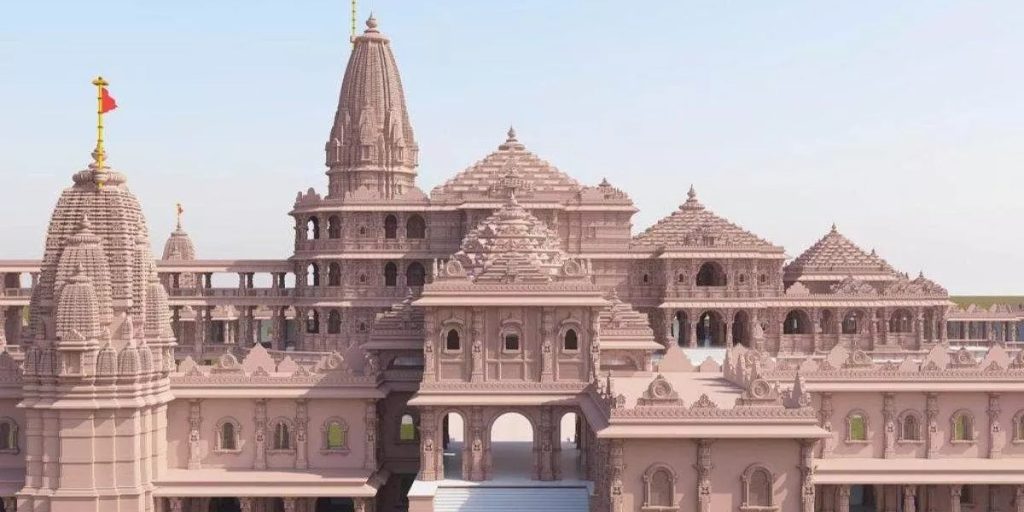
The Marvel of Ayodhya's Ram Temple: A Masterpiece Without Steel or Iron
The grand Ram Mandir in Ayodhya is not just an architectural wonder; it’s a thoughtful, scientifically crafted marvel that embraces the rich heritage of Indian tradition. Designed by the renowned architect Chandrakant B. Sompura with the assistance of his son Ashish, this temple has been in the making for 30 years, following a blueprint conceptualized three decades ago.
Spread across 2.7 acres in the city, the temple stands at a majestic 161 feet in length, 235 feet in width, and a total height of 360 feet. Its construction adheres to one of the two distinctive temple-building styles of ancient India, Nagara, seamlessly blending with modern technology and following all Vedic rituals.
Check all the Ayodhya Ram Mandir Inauguration Live here on OpEd Moped
Special Features of the Temple
- The constructed area of the temple is approximately 57,000 square feet, featuring a three-story structure. The height of the temple is almost 70% that of the Qutub Minar.
- Standing on a raised platform, the holiest part of the temple, the ‘Garbhagriha’ or sanctum sanctorum, is topped by the highest spire or mountain peak on the third floor. Five such spires are constructed over the five mandaps, supported by 300 pillars and adorned with 44 sandstone doors.
- The name of Lord Rama is inscribed in various languages, and almost two lakh bricks gathered over 30 years are being meticulously integrated into the temple.
Unique Construction Approach
During the Gupta period, when the Nagara style originated, the use of steel or iron in temple construction was not prevalent due to their limited durability of around 80-90 years. The temple, therefore, is built using granite, blue stone, and marble, employing a lock and key mechanism to ensure a lifespan of a thousand years. Remarkably, no cement or mortar has been used in its construction.
Also Read: Celebrities who have contributed for the Ram Mandir construction
Groundbreaking Excavation
A 15-metres deep excavation was conducted initially, and 47 layers of engineered soil were laid to establish a solid foundation. A 1.5-metre thick M-35 grade concrete bed was laid, and on top of it, a robust 6.3-meter thick platform of granite stones was installed to strengthen the structure.
Tradition Meets Scientific Innovation
Several eminent Indian scientists have contributed to the construction of the esteemed Ram Mandir. The project has actively involved ISRO’s technologies. Pradeep Kumar Ramancherla, the director of the Central Building Research Institute (CBRI), has been actively engaged in this endeavour.
Also Read: How to reach Ayodhya for Ram Mandir Darshan
An extraordinary ‘Surya Tilak’ mirror, a lens-based device designed by a team of scientists from CBRI and the Indian Institute of Astrophysics (IIA), is set to perform the formal consecration of Lord Rama on every Ram Navami, utilizing sunlight.
In conclusion, the Ram Temple in Ayodhya stands not just as a symbol of religious significance but as a testament to India’s rich cultural heritage, blending tradition with cutting-edge technology.



